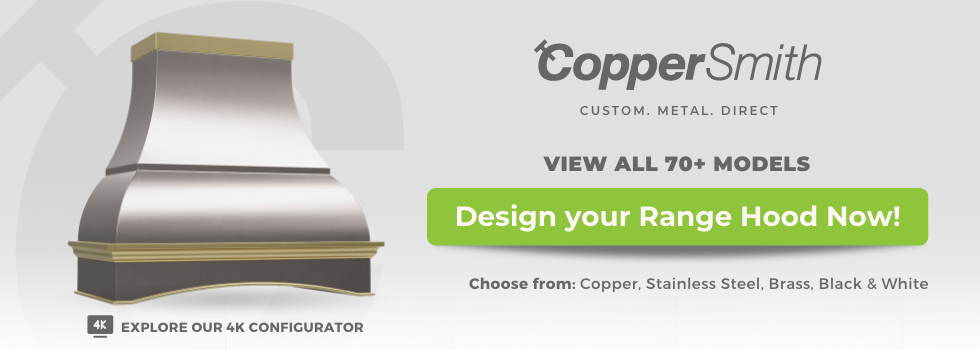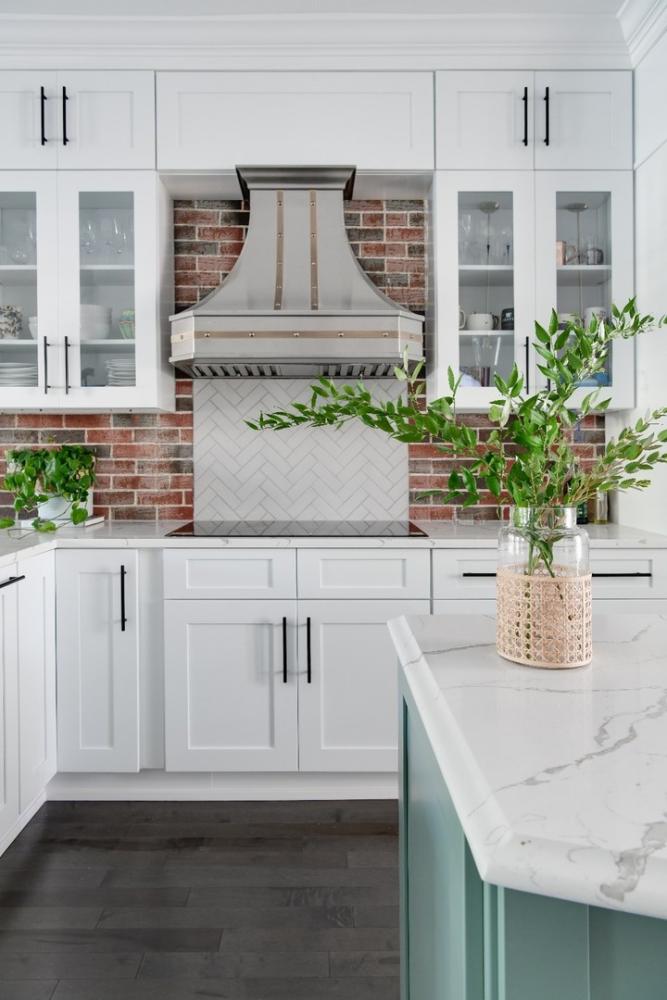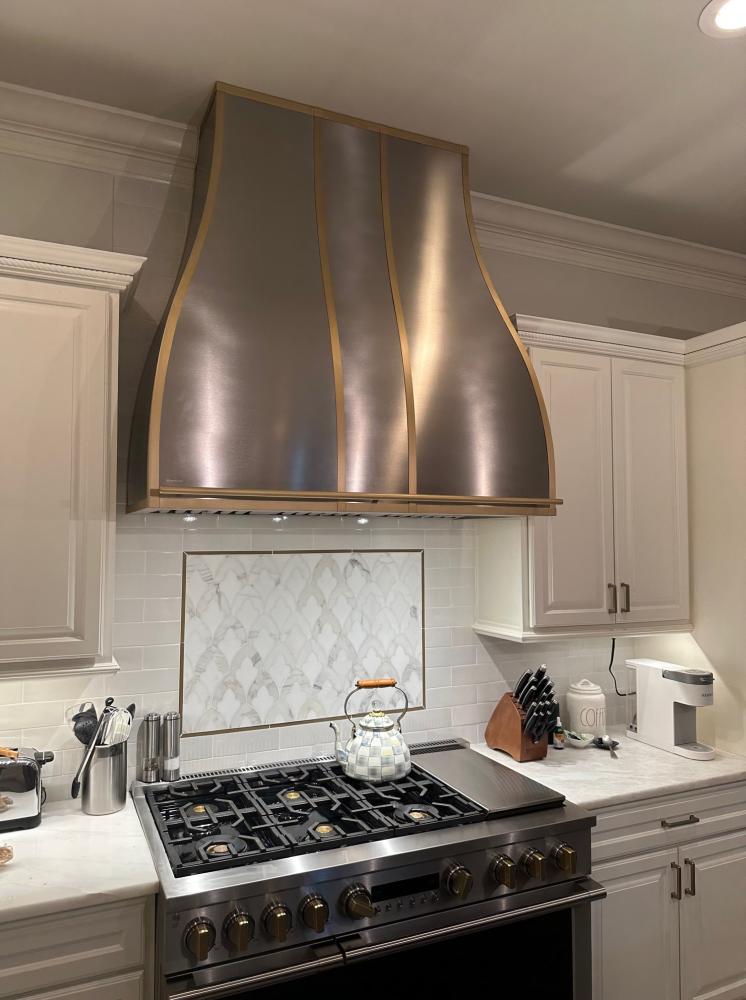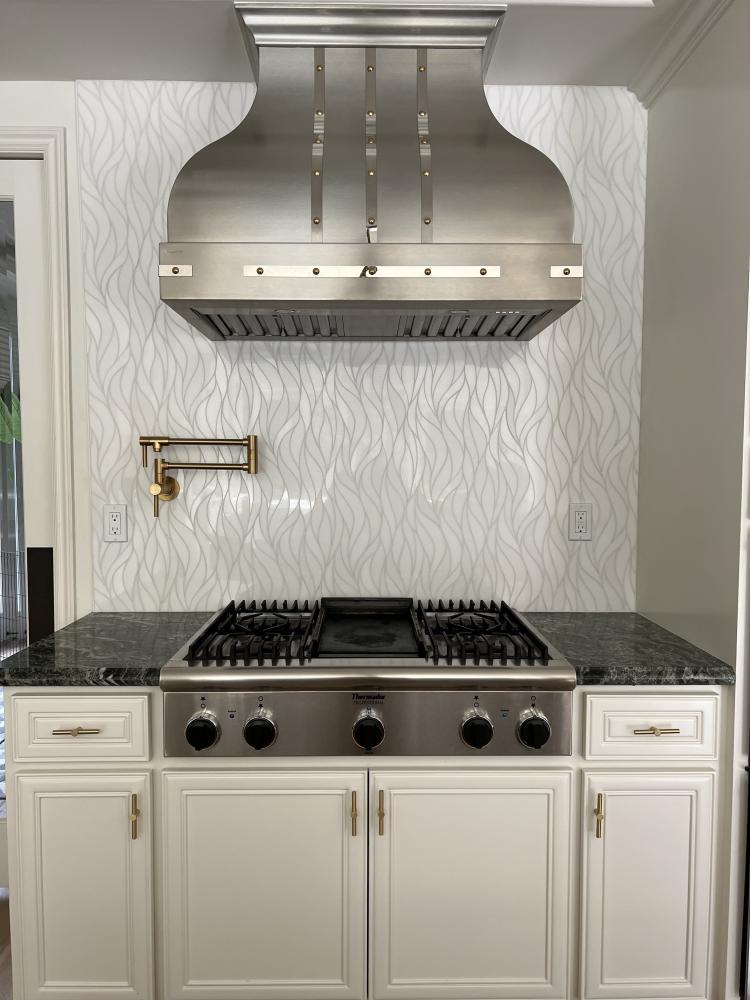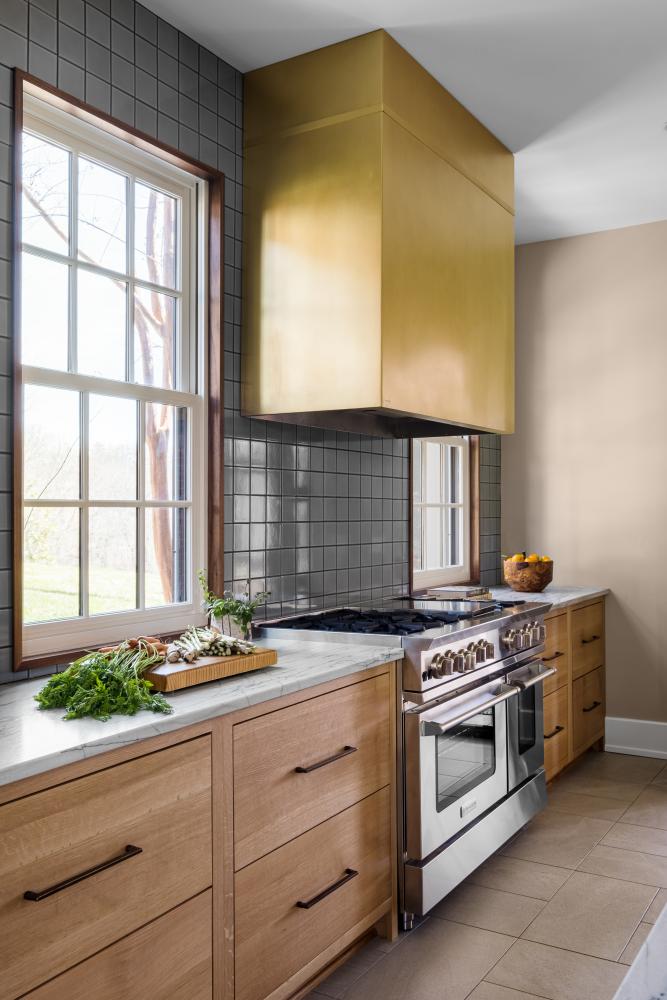In any kitchen, whether it be a domestic one or for commercial use, the cooking area is the heartbeat of the space. And, again whether it’s a home or business kitchen, it is essential that the area remains clean, free from condensation, and absent of hard-to-remove smells. An essential part of the effort to ensure these needs are met, hood vent inserts are an essential inclusion in a busy kitchen, ensuring that any cook can do their job as easily and safely as possible and minimizing damage to surfaces as well as cutting down on clean-up times.
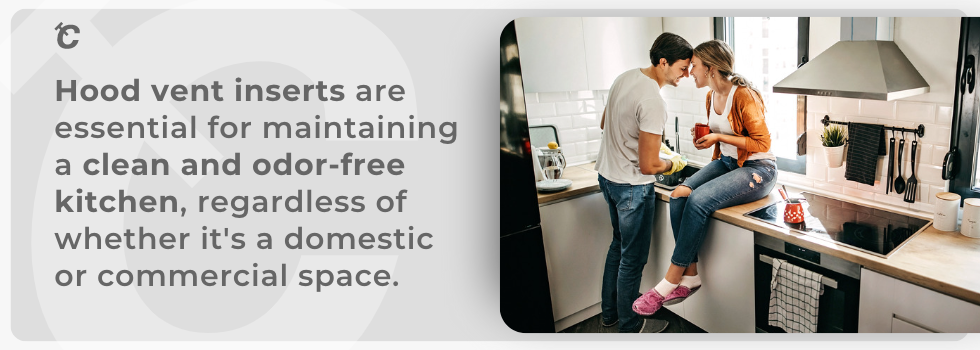
If you are planning a kitchen upgrade, or starting from scratch on a new kitchen, it is essential to ensure that you know what you are looking for when it comes to range hood vent inserts. Whether your kitchen comes with a vent hood built in or you are looking to add one to an existing space, there is a lot you will need to know when it comes to the features you are looking for - and this is where our guide comes in. Below, we will go through the details on which you’ll need to inform yourself before making a decision on your kitchen addition.
What size do I need?
Picking the right size of hood vent insert is perhaps the most important consideration when committing to buy one or include it in a bigger kitchen renovation. Hood vent inserts that are too small will not draw away enough steam, smoke and smells and will leave you with more work to do. Too large, and they will work inefficiently, creating more noise than a smaller vent that could do the job perfectly well; and anyone who has spent time in a busy kitchen knows that the less noise, the better. They’ll also use more power and can become inoperative before their time, which is a huge waste.
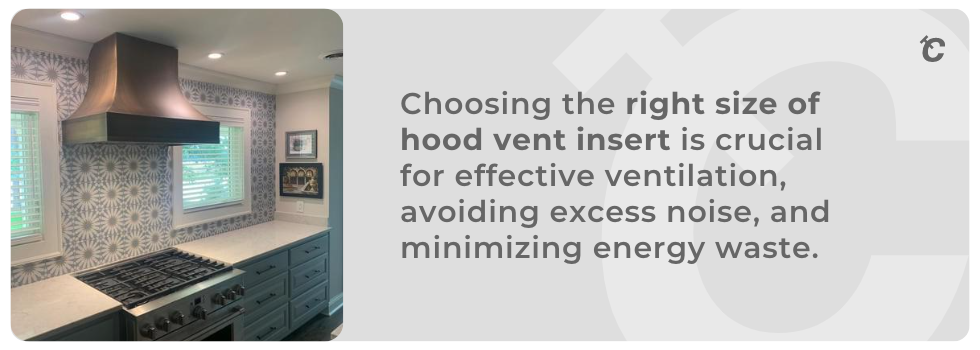
The standard rule of thumb advised by experts is to pick a vent hood that is at least as wide as the cooking top you are using. This will ensure the minimum of escape for smoke and vapors. However, we can be more technical than that. If you want the most effective hood vent insert for your needs, then you should start by knowing the width of your cooker top, and then extrapolate from there using the following advice. Click here to find out what to expect during your range hood installation.
- The opening of your vent hood should be six inches wider than your cooker top. So let’s say your cooker top is 38 inches wide. Your vent hood opening should then be 44 inches, at least.
- But we’re talking about the hood vent insert here, and it needs to be narrower than the vent hood opening itself. Experts recommend that it be narrower by a total of two inches. So you want a hood vent insert that is approximately 42 inches.
- Often, you will find that hood vent inserts come in specific sizes; usually, 42 inches is not one of those sizes. You would then be looking for the next size down, because you need to allow space. Your best choice may be a 40-inch insert.
Of course, when you are buying the requisite items, you will have the chance to ask questions, so make sure to nail down with the seller exactly what the best size they can offer is.
Which features should a hood vent insert have?
As with any piece of technology, anyone reading insert range hood reviews will quickly become aware that new features are being developed all the time. Indeed it can be quite mentally demanding to choose between appliances that have such a wide range of features - an overload of information often makes a choice harder, not easier. You can narrow down the hunt simply by considering what you need from a hood range insert. If one or more models ticks all the boxes, then you can choose between them based on your own preference, confident that you at least aren’t getting it wrong. The key features include:
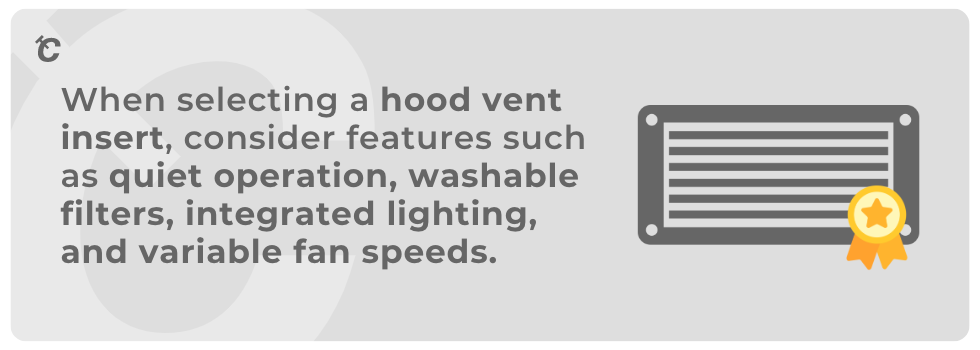
- Quiet operation: As we already mentioned, kitchens can be noisy places to work, even a standard domestic kitchen. You want to be able to minimize any extraneous noise, so when you read insert range hood reviews, always keep an eye out for this aspect. Inline blowers should give you what you are looking for.
- Good, washable filters: The filter in your hood vent insert picks up particles including grease, preventing them from accumulating in the kitchen, and also avoiding expelling them into the exterior air. They’re important for cleanliness and the environment, so pick a vent hood with washable filters.
- Integrated lighting: While not an essential for the efficient functioning of hood fan inserts, the inclusion of lights that illuminate your cook surface is a worthwhile choice when deciding between competing options. These lights will make it easier for cooks to see what they are doing, and also highlight any spillages that need to be cleaned.
- Variable fan speeds: A vent hood insert doesn’t have to be working to the same level all the time. There will be times when it can be run at a gentle pace, and others when it needs to work harder, such as when fish is being steamed on the counter top. Picking a quiet range hood insert that can be versatile will keep your kitchen smelling right.
How to evaluate performance
If it is your first time buying a hood fan insert, then you’re going to note the language used in reviews and sales pitches. Primarily, you will be directed to pay attention to two specific factors of performance: power and noise. Both of these are relatively self-explanatory, but it is worth understanding why they are so important so you can make a correct comparison between the two. For power, the key is that hood vent inserts can deal with as much work as your kitchen is going to throw at them. In terms of noise, you will naturally be looking for a vent hood insert that works as quietly as possible - while still getting the job done, naturally.
To some extent, power and noise levels are in direct competition when it comes to evaluating a vent hood insert. It’s expected that the more powerful a hood insert is, the noisier it will be. That’s a logical assumption, but it is fair to say that technological developments in recent times have been such that there are an increasing number of quiet range hood insert options that are more than powerful enough to deliver exactly what a residential or commercial customer needs from them.
The noise level of a vent hood insert blower can be measured in decibels or sones. Most models on the market come in between six and ten sones, which equates to around 55-60 decibels. Human conversation has been measured at six sones, so if you can get one that is quieter than this and delivers decent power, then it may be a very good residential option, and even better if you can make it work in a commercial kitchen. As for the power, the key numbers to bear in mind are CFM (cubic feet per minute) and BTU (British Thermal Units).
Understanding CFM and BTU
What do these measurements mean? Well, let’s take CFM first and foremost. This refers to the amount of air that the vent hood insert removes from the area around the cooker. The more powerful the insert, the higher the total CFM will be. So when you’re buying a quiet range hood insert, you’re looking for a higher number. With that said, it’s not a done deal that you actually need that much power. For a commercial kitchen that is constantly in operation, a more powerful cooker hood will be desirable, but in a residential kitchen you may not need to pay the extra cost that usually accompanies a higher CFM.
As for the BTU, what does that mean, and why does an American care about British Thermal Units? Well, let’s deal with the less important part of the question first. British Thermal Unit is really just a name - it came about when British scientists discovered the amount of temperature that was required to raise the temperature of one pound of water by one degree Fahrenheit. Ironically, it is more commonly used in America these days since the UK has adopted the Celsius scale. Regardless of this, the BTU that your cooker is putting out tells you how much you need in terms of CFM.
- You can find out the BTU of a cooker in operation from the manual for the cooker, but an example would be that a cooker with six gas rings and an electric broiler will usually have an output of close to 80,000 BTU.
- In order to judge the CFM you need from a cooker hood, you simply divide the BTU by 100. So a cooker such as the above would need a hood that can achieve a CFM of 800. This will keep the area around the cooker clean, clear of smoke and steam, and manageably cool for the chef.
- You should make adjustments in the CFM if you run a kitchen where a lot of strong-smelling food is cooked. Especially domestically, where lingering smells can diminish a house price, someone who cooks a lot of fish on their hob or makes a lot of highly-seasoned food will need a greater CFM. So too will someone who does a lot of indoor grilling, which produces a lot of smoke. If that’s you, look for as high a CFM as you can fit in your budget.
Ducted or ductless and why it matters
One question you will be faced with when buying a vent hood built in or in its own is whether you want a ducted or ductless model. You may well wonder what the difference is, and why it matters, so allow us to assist you with this choice.
A ducted hood vent is connected to a system which removes air from the area and expels it outside. Filters clean the air before it reaches the outdoors, so ideally the air being moved out will be clean and harmless to the environment. Just make sure that you clean the filters regularly and replace them when they are no longer washable.
A ductless vent cleans the air before recirculating it into the room. The drawback of this is that they tend not to remove odors and vapors from the air as fully as a ducted vent, and they are not as effective at removing heat. If you use your kitchen and cooker top in a relatively low-intensity manner, this may not be too much of an issue to you.
Looking at the above, it may seem clear that a ducted hood vent is the better choice, and from a technical point of view this is definitely the case. It should be noted however that a ducted vent requires more complex installation and needs to be positioned very specifically so that the air can be vented outside. This can be both inconvenient and more expensive, so if you can get by with a ductless vent, you will likely be much better off choosing it ahead of a ducted one.
Hood vent insert buying tips
By now you pretty much know what you need to know about the different factors that affect how a hood vent works and what measurements you should look out for. You will probably have a clear idea of what you need, so as a final note we will give you the key tips for customers looking to buy the right hood vent inserts.
- If you are buying a hood vent on its own for an existing kitchen, consider how it will fit in with the present decor and the position of the cooker. If rearranging items would give you greater freedom in choosing a vent, then consider doing so.
- Where two systems will cost around the same amount to buy and install, take a look at their energy efficiency. Hood vents will be in regular use, so a more energy efficient option will save you a lot on running costs.
- If you aren’t familiar with hood vents as a rule, pick one that has simple controls on the user end. The simpler a model it is, the less there is that can go wrong with it.
- To understand what the kitchen will look like once installed, check out our 3D configurator on worldcoppersmith.com and give us a call to request a quote. We have years of experience in uniting customers with the right equipment and we’ll be happy to help out.

